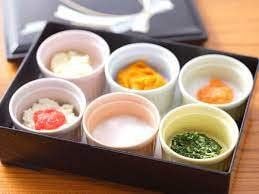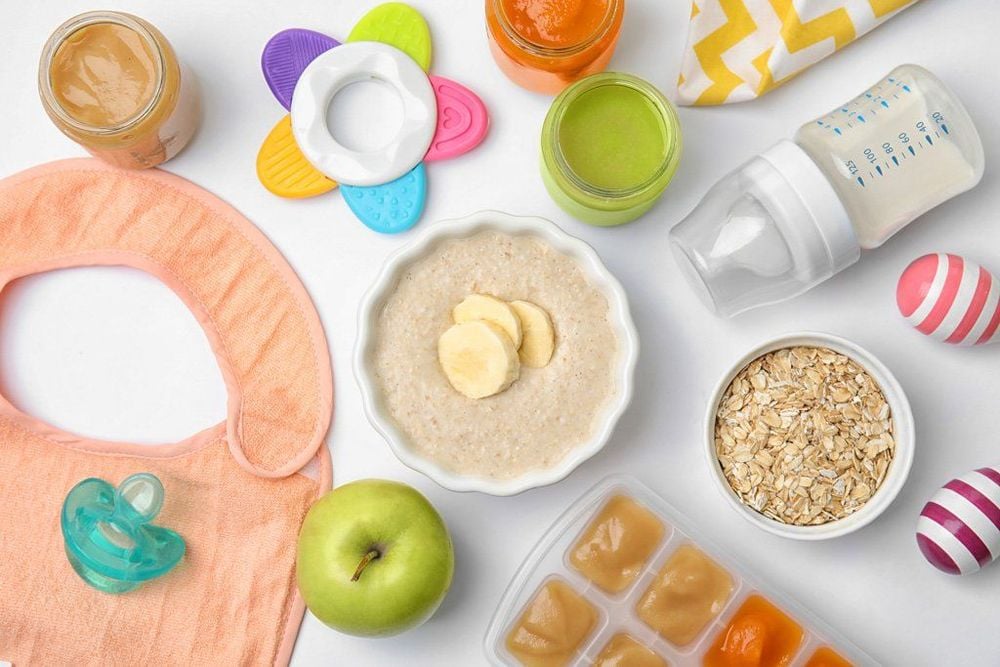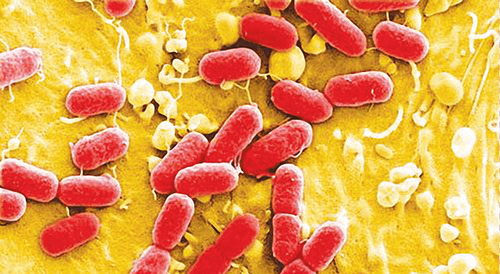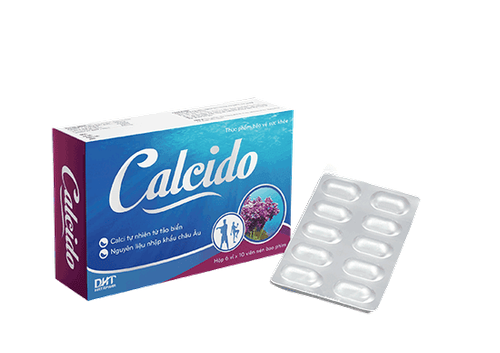This is an automatically translated article.
How many times a day for a child to eat solid foods, and how long each meal is spaced apart is sure to cause headaches for many mothers who are having children during the weaning period. So how many meals should babies from 6-24 months need to eat?1. Why is it important to care how many meals a day children eat solids?
Breast milk is a valuable source of nutrition for a child's development in the first 2 years of life, especially the first 6 months after birth. Babies under 6 months of age need to be exclusively breastfed in order to function, be healthy and grow.
However, from the age of 6 months, babies need to be supplemented with complementary foods in addition to breast milk because at this time their nutritional needs increase, if exclusively breastfed babies will not meet their needs . Therefore, it is necessary to pay attention to how many meals a day should children from 6 months old eat solid foods to ensure that there is no shortage of nutrients and energy for children to operate and develop.
In fact, breast milk still plays an important role, accounting for more than 1/2 of the daily nutritional needs of babies from 6-12 months old and about 1/3 when babies are 12-24 months old. Therefore, complementary foods are not a substitute for breast milk.
It is necessary to pay attention to how many meals a day weaning, the type of food and how to prepare it is suitable for the development of the child in each stage so that the child can absorb all the nutrients from the supplementary food. , avoid the situation that children do not receive enough nutrition leading to rickets, anemia, ...
Besides, the number of weaning meals should also be balanced with breast milk for the child to gradually adapt to different foods, Avoiding overeating can cause the baby to refuse breast milk, reducing the amount of breast milk produced to meet the baby's needs.

Ăn dặm mấy bữa mỗi ngày là thắc mắc của nhiều bậc cha mẹ
2. How many meals a day do children from 6-24 months old eat solids?
Currently, there are many types of weaning that mothers can choose to practice for their children such as traditional weaning, Japanese weaning, or baby-led weaning. With the traditional and Japanese-style weaning methods, the baby's food needs to be processed with increasing consistency and the mother can eat several meals a day as follows:
6 - 7 months old: 1 meal/day , combined with breastfeeding. Feed amount from 100-200ml/meal. Starting from flour, porridge is diluted with ground and ground food, then gradually increased to a thick, thick consistency. 8 - 9 months old: 2 meals/day, combined with breastfeeding. The amount of food is about 200ml/meal. Offer your child porridge or solid cooked powder with mashed or finely chopped food. 10 - 12 years old: 3 meals/day, combined with breastfeeding. The amount of food increased to about 200 - 250ml/meal. Give your child porridge or cooked powder with finely chopped food. In addition, it is necessary to practice for children to hold food that has been steamed, boiled, or cooked. 12-24 months: 3 meals/day, combined with breastfeeding. The amount of food increased from 250-300ml/meal. However, how many times a day to feed a baby solids depends on the child's ability to cooperate and his eagerness for food. At the beginning, the child can only eat about 1-2 spoonfuls, if the child shows interest, the mother can gradually increase the amount of food in each meal until the child can eat from 50-100ml at a time. eat.
In principle of increasing the number of weaning meals, mothers can remember to start with 1 meal/day for the first 2 months, then increase 1 meal in the next 2 months until the baby can eat 3 meals /day.
Note, when the number of meals a day for babies increases with the amount of food, the amount of breast milk will decrease. However, it is necessary to continue to maintain breast milk supply until the baby is 1 year old.

Trẻ ăn dặm mấy bữa phụ thuộc vào độ tuổi của trẻ
3. Suggest a weaning menu for how many meals a day for children
With the recommended number of weaning meals for children mentioned above, mothers can refer to the menu suggestions of the National Institute of Nutrition suitable for children in each stage as follows:
Children from 6 to 8 months old: Quality flour (20g of plain rice starch), protein can be peeled and pounded fresh shrimp powder (15g), eggs (10g equivalent to 1 chicken egg yolk or 4 quail egg yolks), lean meat (10g), fish (10g, boneless), fiber (2 tablespoons chopped greens), fat (1 teaspoon cooking oil or fat). Children aged 9-11 months: Powder (25g of plain rice starch), protein can be peeled and pounded fresh shrimp powder (15g), crab powder (30g), lean meat (15g), fish (15g) , boneless), fiber (2 tablespoons chopped greens), fat (1 teaspoon cooking oil or fat). Children from 12 to 23 months old: Powder (40g of plain rice starch), protein can be peeled and pounded fresh shrimp (25g), eggs (30g equivalent to 1 chicken egg), lean meat (25g) , fish (25g, boneless), eel (25g), fiber (2-3 tablespoons chopped greens), fat (1.5-2 teaspoons cooking oil or fat). How many meals a day for children from 6-24 months old needs to be taken care of to ensure that they meet the nutritional needs for the child's growth, activity, and health.
The period of baby eating solid foods is an extremely important period to help children develop comprehensively. Children who do not eat properly are at risk of micro-mineral deficiencies, causing anorexia, growth retardation, malabsorption, etc. If they notice the above signs, parents should supplement their children with supportive products. The supplement contains lysine, essential micro-minerals and vitamins such as zinc, chromium, selenium, and B vitamins to help fully meet the nutritional needs of children. At the same time, these essential vitamins also support digestion, enhance nutrient absorption, help improve anorexia, and help children eat well.
Parents can learn more:
Signs of zinc deficiency in children
Micronutrient deficiency and failure to gain weight in children
Please regularly visit Vinmec.com website and update useful information to take care of your child. Take care of the baby and the whole family.













